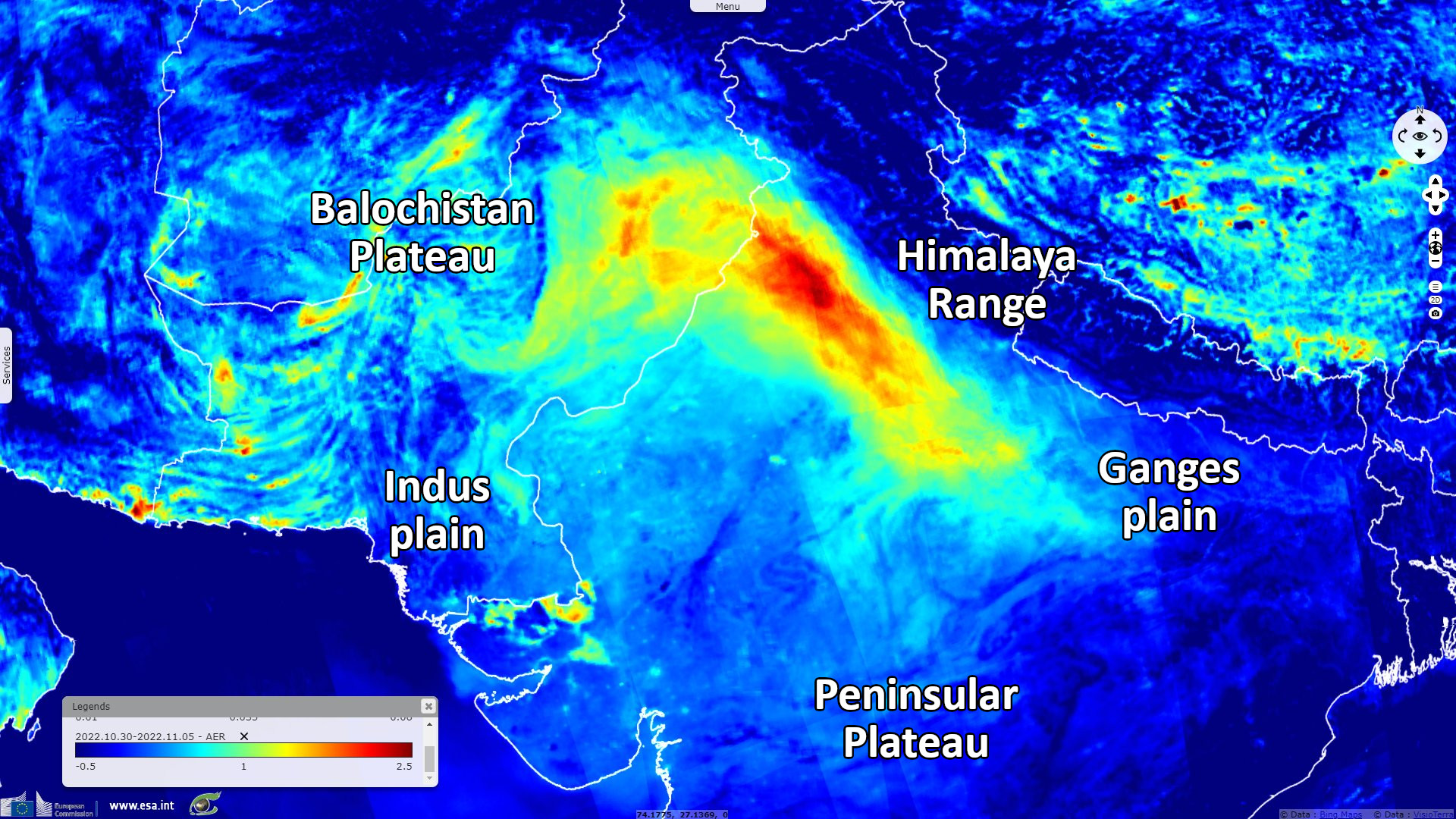A stagnant haze pollutes the Ganges and Indus valleys, India & Pakistan
Sentinel-3 OLCI FR acquired on 30 October 2022 from 04:49:01 to 05:31:08 UTC
...
Sentinel-5P TROPOMI CO & AER_AI acquired on 05 November 2022 from 08:57:49 to 09:02:49 UTC
...
Sentinel-5P TROPOMI CO & AER_AI acquired on 05 November 2022 from 08:57:49 to 09:02:49 UTC
Keyword(s): Atmosphere, air quality, health, agriculture, fire, Himalaya range, India, Pakistan
During the winter season, most Indian cities within the Indo-Gangetic Plain experience harsh pollution. Weather conditions & agricultural practices cause severe levels of air quality index.
The post-monsoon meteorological conditions favor more stable atmosphere rendering the pollutants to accumulate and reside longer in the atmosphere leading to severe levels of pollution.
The common farming system in the Indo-Gangetic Plain is the rice-wheat rotation system. In the Punjab region, rice is usually planted in the summer season, around May/June, and harvested around October/November. On the other hand, wheat is normally planted during the winter, mostly in December and harvested during the summer of the subsequent year, around April/May.





